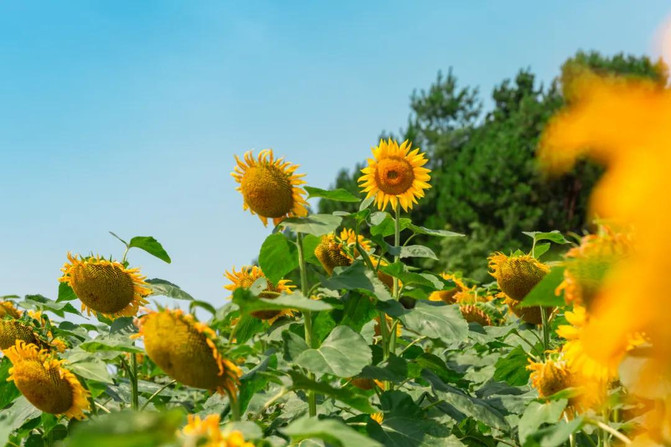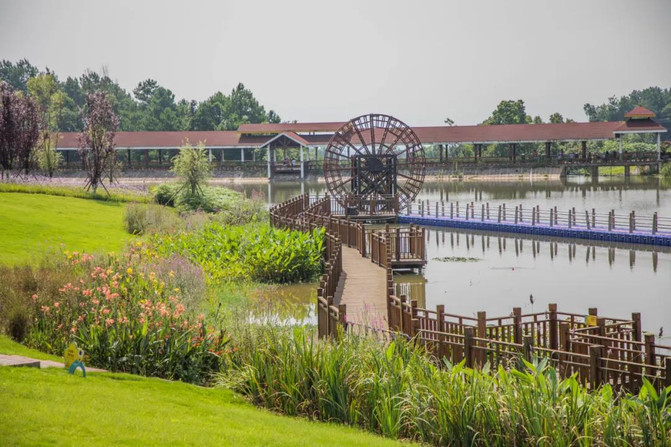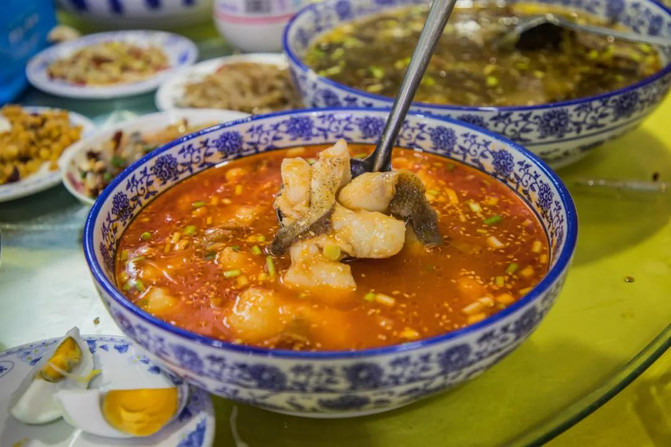Amidst the hustle and bustle of summer in one room and the clear scenery of mountains, come to Qijiang in August to escape the heat
The wind in August is no longer so gentle, and the weather in August is still unbearably hot. On such a hot summer day, what I most want to go to is to find a cool place to steal half a day of leisure.

Qijiang is known as the "cool capital of Chongqing" and the "hometown of summer fishing in Chongqing", and is an ideal place for summer health preservation and leisure tourism in Chongqing. From afar, the undulating mountains and waves, layers upon layers of distant mountains, marvel at the charm of thousands of mountains, with white clouds filling the air and water mist swirling around. Qijiang, with its superior climate and environmental advantages of warm winter, early spring, cool summer, and overcast autumn, with an average annual temperature of 18.8 ℃, has become a great place to escape the summer heat. This time, I invite three to five friends to come to Qijiang together for a summer vacation.

scheduling:
Day 1. Departing from the main city - Hengshan Huaxian Valley Scenic Area - Gujian Mountain - Delicious Crispy Carp
Day 2. Wang Liang's Former Residence in Yongcheng Town - Yongcheng Blowing and Beating Exhibition Hall - Revisiting the Long March Road - Dinner with Stable Lamb Meat
Day 3. Qijiang Museum - Qijiang Farmers' Printmaking Academy - Lunch at Beidu Fish - Return Trip
Day 1. Departing from the main city - Hengshan Huaxian Valley Scenic Area - Gujian Mountain - Delicious Crispy Carp
Hengshan Huaxian Valley Scenic Area
On our first day of traveling in Qijiang, we went to Hengshan Flower Fairy Valley and felt the unique romance of summer as we walked through the sea of flowers. The first thing that caught our eyes was a large and spectacular field of horsewhip grass.



Wandering in this purple sea of flowers, smelling the fragrance of flowers, enjoying the beautiful scenery, forgetting all the troubles and sorrows in the world. Looking from a distance at the clear sunflower sea, it is golden and shimmering. The gentle breeze blows like rolling golden wheat waves, shining brightly. There are also large lawns, all naturally formed. When tired, lying on them is soft and fragrant with green grass, which is incredibly comfortable.


In addition to its beautiful natural scenery, Huaxian Valley also has interactive experience projects such as Cute Pet Paradise, Huaxian Valley Cruise, Flower Sea Slide, Huaxian Speed Skating, etc., allowing people of all ages and genders to have different experiences and gains here. It is a very good leisure and vacation destination that integrates leisure and summer vacation, parent-child sightseeing, homestay vacation, and study tour.



Gujian Mountain
After visiting Huaxian Valley, we headed straight to Gujian Mountain in the afternoon. Gujian Mountain is the highest peak in Qijiang. In addition to the beautiful mountain scenery, the homestays here are also a major feature, including starry sky bubble houses, small wooden houses, Mongolian yurts, and tents, which should be well-equipped! Sleeping on the ancient sword mountain with the chirping of insects at night, counting the stars in the sky, letting the cicadas in the distance and the gentle breeze by your ears accompany you to sleep, will you not want to wake up in your dreams?



Jigongzui is the highest point of Gujian Mountain Scenic Area, where the century old Jingyin Temple is located. In the morning, you can enjoy the sunrise, sunset, clouds and mist, and the scenery below the mountain is fully visible. You can listen to the morning bells and evening drums of the Buddhist temple, devoutly make a wish to the Bodhisattva, hoping that everyone is healthy.



Where there is beautiful scenery, there must be delicious food. The specialty here is crispy carp. This type of fish is different from the ones we usually eat. It has a crispy texture, and the shop owner said that fish is usually fed with food, which gives it such a chewy taste. There are many ways to make fish, including spicy, double pepper, boiled water, and fish aroma. It can meet the needs of different diners and definitely satisfy your appetite. It's not a waste of this trip.




Day 2. Wang Liang's Former Residence in Yongcheng Town - Yongcheng Blowing and Beating Exhibition Hall - Revisiting the Long March Road - Dinner with Stable Lamb Meat
Wang Liang's Former Residence in Yongcheng Town
The former residence of Wang Liang is located in Sanhuaiba Community, Zhonghua Village, Yongcheng Town. It was built in the late Qing Dynasty and faces east and west, with a layout of a quadrangle courtyard. The main house is a perforated style, and the left and right wing rooms are perforated wooden structures with blue tiles. It is a typical residential building in the late Qing Dynasty's eastern Sichuan (now eastern Chongqing) area. It is the former residence of Mr. Wang Liang, a famous general in the early days of the Red Army and the commander of the Fourth Red Army. It is a great place to inherit red culture and promote revolutionary spirit.


Yongcheng Blowing and Beating Exhibition Hall
Besides Wang Liang's former residence, the next stop is Yongcheng Blowing and Fighting Exhibition Hall. Yongcheng Blowing and Beating "is a folk instrumental music genre in Yongcheng Town, Qijiang County, with a history of over 300 years and has been passed down for 18 generations.


However, due to the development of the times and the invasion of various foreign musical instruments, this intangible cultural heritage is also facing the problem of being unable to be inherited. This exhibition hall is said to have been built by an 80s wind and percussion inheritor who gave up a high salary and returned to his hometown. There are various types of suona on display inside, among which the largest suona is specially transported back to China with a charter fee of 100000 yuan from abroad. The suona displayed here is not made of traditional iron sheet, but made of bamboo weaving. I really hope that this ancient folk art will not be lost and will be inherited and developed in the hands of the new generation of artists.


Retrace the Long March route
As a red revolution education base, coming to Qijiang, of course, one cannot have a trip to red culture. At the border between Chongqing and Guizhou, the "Red Army Bridge" spans 25000 miles during the Long March of the Red Army, with a span of only 19 meters. The entire length of this bridge is negligible during the Long March of the Red Army. However, it was this distance that witnessed the history of the Red Army's Long March to Qijiang, as well as the strict military discipline of the Red Army's unwavering commitment.



And the 'Red Army Cave' was used by fellow villagers to hide the wounded soldiers of the Eighth Route Army, which also demonstrated the profound military civilian relationship. The nearby Shihao Red Army Martyrs Cemetery was built for the relocation of five Red Army martyrs who sacrificed their lives during the Long March in Shihao. It consists of seven parts: the Long March Poetry Stele, Martyrs Cemetery, Martyrs Statue, Martyrs Memorial Tower, Martyrs' Deeds Exhibition Hall, Inscription Stele Forest, and Red Army Propaganda Slogan Stele Forest. Standing here, it seems like the scene of the Red Army crossing the Qijiang River in the past has been recreated, as if the Red Army is right beside us, a very good revolutionary education base.




For dinner, we had Qijiang's famous delicacy - An'an lamb. Lamb soup is divided into red soup and clear soup, which contains fresh lamb and lamb offal. It can also be paired with vegetables, mushrooms, etc. The rich and white soup and mellow and soft texture make people unable to help but indulge. Paired with homemade dipping dishes, the flavor is even better.


After eating mutton, if you still want to eat, you can also put Rice noodles into the pot, which is a bowl of mutton Rice noodles that is delicious enough to burst the table. It will definitely make you eat enough.

Day 3. Qijiang Museum - Qijiang Farmers' Printmaking Academy - Lunch at Beidu Fish - Return Trip
Qijiang Museum
The predecessor of Qijiang Museum was Qijiang Stone Carving Art Museum, which was relocated from Shimen Temple in Sanjiao Town, Qijiang in 1997. After expansion and improvement, the Qijiang Museum now covers an area of 9677 square meters, with five exhibition halls including the Prologue Hall, Qilong Hall, Geology Hall, History and Culture Hall, and Stone Carving Hall. Each item displayed in each exhibition hall is a silent teacher, conveying various knowledge that we cannot know.


The first floor of the Qijiang Museum is a model of the ancient city of Qijiang, which vividly restores the social life scenes of Qijiang in the past. The special design is a urn like structure called the Weng City, which was built by ancient people to resist strong enemy attacks. It includes fortifications such as bunkers, arrow towers, and stacked walls, embodying the wisdom of ancient laboring people.

The second layer is the geological layer, where many precious mineral specimens are placed. In the center of the hall, in the awe inspiring dinosaur footprint area, three dinosaur fossils of different sizes have reconstructed the life scenes of the once dominant dinosaurs on Earth. This is the first time I have had such a close encounter with fossils face-to-face, and to be honest, it is very shocking.



The third floor is the Qijiang Historical and Cultural Hall, where the essence of Qijiang's cultural history is gathered. It not only vividly introduces the history of Qijiang and its future prospects, but also showcases the Liao people's writings discovered in Qijiang, which is an exclusive exhibition nationwide. These textual symbols, which resemble Thai, Dai, and Zhuang scripts, represent the ancient and mysterious civilization of the Liao people in Qijiang.



Qijiang Farmers' Printmaking Academy
There is an art with a strong Qijiang imprint, and Qijiang is known as the "hometown of Chinese folk culture" because of it. It is a Qijiang farmer print. And was awarded the title of "Hometown of Farmers' Prints" Qijiang Farmers' Printmaking Academy, which gathers the best printmaking in Qijiang and is known as the "Oriental Picasso" original ecological art. The first floor of the Printmaking Academy is the exhibition hall, displaying gift paintings of Qijiang farmers' prints and some derivatives of prints, such as pillows, umbrellas, wine utensils, etc. Many tourists buy their favorite print works here for souvenirs or gifts to friends and family.


The second floor of the Printmaking Academy is a display of some excellent works, with bright colors, peculiar imagination, and mostly themed around life, with rich themes. The third floor is the printmaking studio, which houses the creative studios of teachers Li Chengzhi and Huang Yuanyuan. In the studio, you can see the entire process of printmaking. A print involves collecting materials, drawing lines with pencils, matching colors to the artwork, then shaping it, transferring the reverse carving onto a board, and finally making and printing it. The process involves more than ten steps, and every step truly requires the absolute effort of the artists.




Beidu fish is also a unique delicacy of Qijiang, and it has been said since ancient times that Beidu fish must be eaten in Qijiang. The raw material used for Beidu fish is the flower carp from Qidu Ferry in Qijiang. After removing the scales and armor, the fish is cooked in a clay stove, and fresh fish is added. Then, a large amount of chili peppers, Sichuan peppercorns, garlic, and some unique seasonings are sprinkled on top of the pot, followed by a secret boiling oil. This dish is a combination of fresh, fragrant, numbing, spicy, tender, and refreshing Beidu fish. Nowadays, there is also a taste of "one fish and four foods", with spicy, pickled Chinese cabbage, tomatoes and other multiple combinations and practices. The fresh and tender fish meat is exceptionally delicious. After eating, you can also enjoy a bowl of soup and a bowl of noodles. It's really a pleasure.



The flow of time always flies, and in the blink of an eye, the three-day journey to Qijiang is coming to an end. During my days in Qijiang, I truly felt the freshness and coolness of the air. In the morning, I could enjoy the changes of morning glow and morning mist, in the evening, I could appreciate the charm of sunset and evening glow, and in the evening, I could admire the blue starry sky and sparkling stars. Compared to the hot and humid climate in Chongqing, it's truly a heavenly pleasure.

Freeze your back in the summer of Qijiang, tell the wind, fill the summer with fragrance, like an unspeakable but joyful secret; Speak to the mountains, enrich the green paintings, and enjoy a grand flower festival in August along the winding mountain roads; Speak to the lake, recite poetry with tranquility, travel through time and space, and enjoy the poetic and picturesque countryside of Qijiang. Qijiang, it's our first time meeting. I want to get closer to you and see more beauty~

Travel advice:
High speed railway: Chongqing Xiqi Jiangdong, 26 minutes, 22 yuan/person
Self driving: Chongqing main city - Inner Ring Expressway (G75 Lanhai Expressway), 1 hour, 10 minutes, 70 kilometers, toll fee of about 20 yuan
Previous Article:Self guided tour of Sichuan and Chongqing, an unforgettable experience of seven days and six nights
Next Article:Mountain City Chongqing | Food, Accommodation, Transportation, Travel, Shopping, Entertainment and Dry Goods (Part 1)
